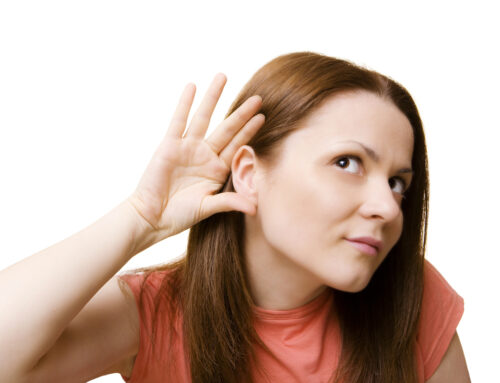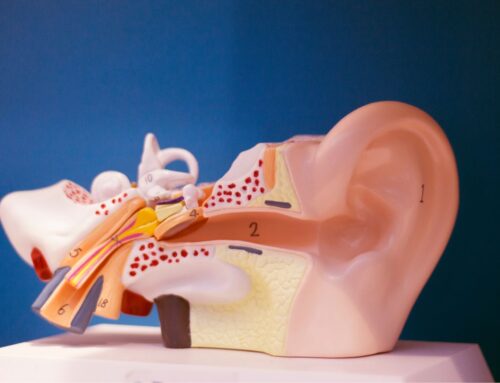The Connection Between Balance & Hearing Loss
It’s obvious that hearing happens in our ears but did you know that balance does too? The systems for balance – vestibular system – and hearing – auditory system – are housed in the inner ear. This means that balance issues can impact hearing and vice versa.
Balance: The Vestibular System
The main part of the vestibular system is the vestibular labyrinth which consists of semicircular canals, otolithic organs, and the cochlea. Coupled with sensory cells that act as receptors, these components work together to communicate information about movement and position to the brain. Semicircular canals in the vestibular labyrinth consist of:
- First canal: senses up and down motions
- Second canal: senses side-to-side movements
- Third canal: senses tilting movements
These canals are filled with sensory cells that send signals to the brain (via the vestibulocochlear nerve) about motion and spatial positioning in relation to gravity. The brain uses this information along with visual cues to manage stability, balance, and movement.
This information coupled with visual and muscle inputs allows us to maintain balance and move safely through space.
Hearing: The Auditory System
The auditory system involves the ears and brain which work together to absorb and process speech as well as sound. This consists of:
- Outer ear: the outermost visible part of the ear collects and absorbs soundwaves which travel down the ear canal and land on the eardrum.
- Middle ear: the ossicles – three tiny bones that are connected – help propel soundwaves further into the inner ear.
- Inner ear: there are thousands of sensory cells in the inner ear which help convert incoming soundwaves into electrical signals.
The auditory nerve carries signals to the brain where they are further processed. The brain assists meaning to these signals which allow us to understand what we hear.
Balance Disorders & Hearing Loss
Older adults disproportionately experience balance disorders and hearing loss.
- Adults ages 65-74:
-
-
- Balance disorders: 20%
- Hearing loss: 1 in 3 (33%)
-
- Adults ages 75 and older:
-
- Balance disorders: 25%
- Hearing loss: 1 in 2 (50%)
These conditions can be experienced individually as well as overlap. A balance disorder involves the vestibular system which not only is next to the auditory system but both share the same nerve that is used to send messages to the brain about balance and hearing. Balance disorders can be caused by inner ear disorders like Meniere’s disease, viral or bacterial infections (labyrinthitis or vestibular neuritis), or benign paroxysmal positional vertigo (BPPV). These conditions produce inflammation or an accumulation of fluid that can also impact the sensory receptors that translate sound waves for the brain. And because both balance and hearing share the same nerve pathway to the brain, one can impact the other. For example, inner ear disorders like Meniere’s disease can affect balance and produce hearing challenges as well.
Treatment Options
Fortuenayl, there are effective ways that balance disorders and hearing loss are treated. Underlying causes inform the best course of treatment, options include:
- Balance Disorders: there is a range of treatment options for balance disorders. Treatment depends on the underlying cause and can include:
- Medications: this can include antibiotics to clear infections or prescribing medications to alleviate symptoms like dizziness and nausea.
- Vestibular Rehabilitation Therapy (VRT): includes practicing specific exercises that work on gaze stabilization, balance training, and habituation of certain movements.
-
-
- Canalith repositioning: this treatment is used to address BPPV and involves performing head movements to reposition dislodged crystals in the inner ear.
-
- Hearing Loss: the first step toward treating hearing loss is to have your hearing health assessed. Hearing tests involve a painless process that measures hearing capacity in both ears. This identifies any hearing loss and the degree of impairment in each ear. Hearing aids are commonly used to treat hearing loss. These savvy electronic devices are designed to absorb, amplify, and process speech as well as sound. This alleviates hearing loss symptoms while also increasing hearing capacity. Treating hearing loss offers countless benefits including strengthening communication as well as cognitive functions.
Contact us to learn more about the link between balance and hearing loss. If you experience balance issues, it may also be useful to have your hearing health evaluation. Call us today to schedule an appointment.







Leave A Comment